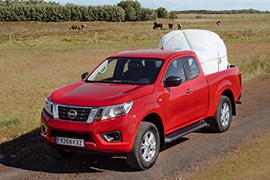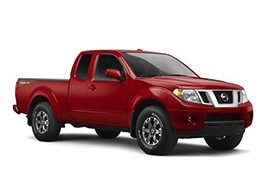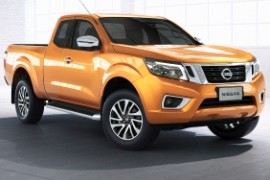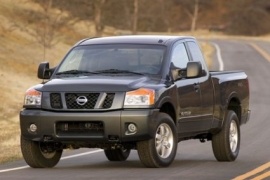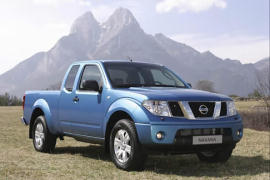NISSAN Navara / Frontier King Cab Models/Series Timeline, Specifications & Photos
First production year: 2005
Engines: Diesel, Gasoline
Body style: Truck
Nissan has a very long experience in off-road vehicles and one of its top-models is the Nissan Navara/Frontier pickup. In 2016, this model surprised the market by launching the first vehicle in its segment with coil springs at the rear, whereas all the others offered leaf-springs. At the beginning of 2020, Nissan showed an updated version.
Some things are as good as they are and the Nissan Navara/Frontier King Cab is one of those vehicles, having been praised around the world. Now Nissan has added some changes, just to update it to the new rules and regulations regarding emission and safety norms. But the carmaker didn't have to work too much since the car was very good since its launch.
The revised 2020 Navara King Cab has new headlights and other small visual changes. But the real upgrade is underneath the surface. Under the hood, there is the same 2.3-liter turbodiesel engine from Renault, but both variants of it are twin-turbo. The entry model has a mere 3 hp increase to a total of 163 hp but has a bigger torque, reaching 425 Nm (313.5 lb-ft). The top version has the same 190 hp. Fuel consumption has been improved and now it has a combined value of 6.9l/100 km. The transmission offered is either a new 6-speed manual gearbox or the same 7-speed automatic as before.
For stopping power, Nissan has installed new 320 mm discs on the front and replaced the old rear drums with new 308 mm discs. Thanks to some other weight savings on the vehicle, the payload has been increased to 1165 kg (2598 lbs).
Nissan refreshed the Frontier lineup in 2018 and added a few features to the workhorse vehicle that was on the market for nine years, keeping it up to date and competitive.
The Japanese automaker managed to compete against Ford Ranger and the Chevrolet and was based on an older chassis but with enough improvements. After all, it didn't have to change a chassis that was sturdy enough to handle the job; it just needed the power and the amenities to keep it moving.
When Nissan started to upgrade its lineup, it created a new signature on the front fascia with a V-shaped chromed detail. This design element was also shown on the 2018 Frontier. In addition, the headlights were also reshaped. Finally, in the King Cab version, the Japanese pickup sported a pair of rear-hinged half-doors in the back.
Behind the cabin, the King Cab featured one of the longest beds in its family, making it useful for those who needed a light pickup capable enough to carry an ATV or a bike.
Inside, Nissan upgraded the infotainment system and also included a backup camera. However, the cabin was still decorated with hard plastic in all areas. After all, it was a work truck. Still, Nissan offered the Frontier a decent sound system and a center console with two cup holders. In the back of the cabin, the automaker installed two jump seats, just in case someone needed a ride back home. But that area was mostly useful as storage.
Under the hood, Nissan placed its bets on two engines: a 2.5-liter inline-four and a 4.0-liter V6. A five-speed automatic was on the options list, and besides the auto mode, it also offered a manual mode.
While its double-cab version was built mainly for pleasure, the Navara King Cab featured some details that transformed it into a much stronger, hard-worker, pickup.
Nissan had over 80 years in building pickup vehicles and that experience can be bought from a shelf. It came with a serious understanding of what people need and want to buy. This is why their engineers didn't cut corners when they built the NP300 Navara King Cab.
At a glance, some would say that King Cab is a Double Cab with shorter, rear-hinged, small doors. It was just a part of the equation. The Nissan knew that even if the car is used by a team of two, they will need some accessible storage room. Unlike some of their previous pickups, the 2015 Navara showed a better outside design. The market shifted and more European buyers were looking for this kind of vehicle for recreational use.
Inside the cabin, Nissan installed an SUV-like interior with features that could be found on their top sellers' models such as the Qashqai and X-Trail. The big infotainment unit was offered as an option but it featured a touch-screen display, navigation unit, and premium sound system.
For the technical department, there was one engine fitted with one or two turbochargers and two transmissions available: a 6-speed manual fitted as standard and a 7-speed dual-clutch automatic transmission from Mercedes-Benz. For the suspension, the King Cab featured leaf-springs in the back, unlike the Double Cab that was equipped with coil-springs for better comfort.
The rugged Nissan Frontier King Cab was a half-ton pickup truck that could be offered either with 2 or 4WD. Its long bed and spacious cabin were some of its strong points on the market.
The Nissan Frontier was based on a shortened version of the Nissan Titan chassis. Due to this, it was able to handle high payloads. Its maneuverability was very good due to its tight turning circle. The front-wheel independent suspension was praised for the comfort it offered.
The Frontier was offered with a 4-door Crew Cab or a 2-door King Cab version. Unlike its 4-door version, the King Cab offers some limited rear seats, mainly for kids or to hod the fishing rods inside. The King Cab offered an infotainment unit without a sat-nav. The rear window, facing the bed, had a center side that could slide-open.
Underneath the car was the same ladder-chassis from its bigger brother, the Titan. Having a closed-box cross-section, it meant that it was a very rugged chassis that could handle high-payloads and big engines. But the Frontier had only gasoline engines for the North-American markets. The European version, named Navara, had a 2.5-liter turbodiesel under the hood.
For the 2009 model update, the Nissan offered the Frontier with a special off-road package named 4X that featured underneath skid-plates, off-road tires, off-road shocks, and lockable rear differential.
The second generation of the Navara came in three cab designs: Simple, King, and Double. On the European market, it was named Navara, while on other markets wore the name Frontier.
The second generation of the Navara was launched in 2005 and it was the model that started the change toward a leisure vehicle instead of the rugged utility model as it was known. In some markets, the 2005 Navara (D40) was sold in parallel with the older version (D21) up until the appearance of the third generation of the Navara in 2015.
The King Cab version was built with a set of rear-hinged half-doors in the back. It even featured two tiny folding seats that could have been used in an emergency. Those were not for daily use unless the occupants were children sized or children. The front of the car was the same but the rear bed was longer than in the double-cab version. Its length was enough to accommodate two dirt-bikes side by side or a 4x4 ATV.
Inside, the Navara came equipped with SUV-like features such as automatic climate control, leather heated seats, and navigation system. It could be fitted with a rear-view camera as well. But the car-maker didn't pay too much attention to the safety and the car received a shameful one star with a strikeout in the EuroNCAP test. After an emergency re-work on the car, it could manage a pitty 3-star rating.
The King Cab was available with a four-wheel-drive system and a low-range transfer box. Depending on the market, it was available with a wide choice of gasoline or diesel engines. In Europe, there were two versions with a 2.5-liter inline-four or a 3.0-liter V6. It could carry up to one ton (2204 lbs).
